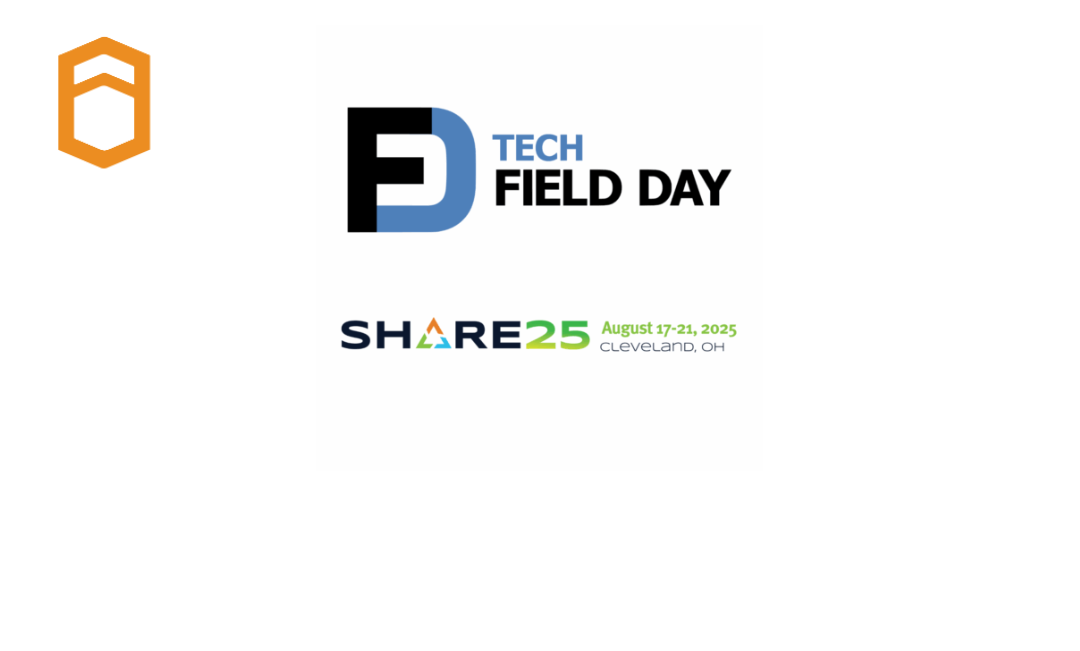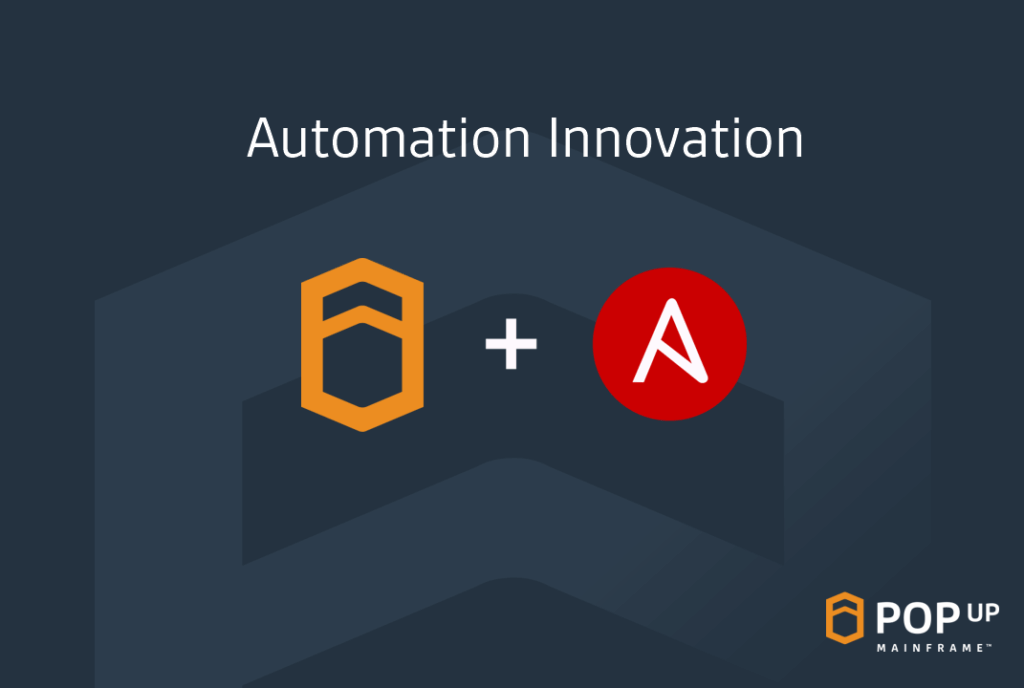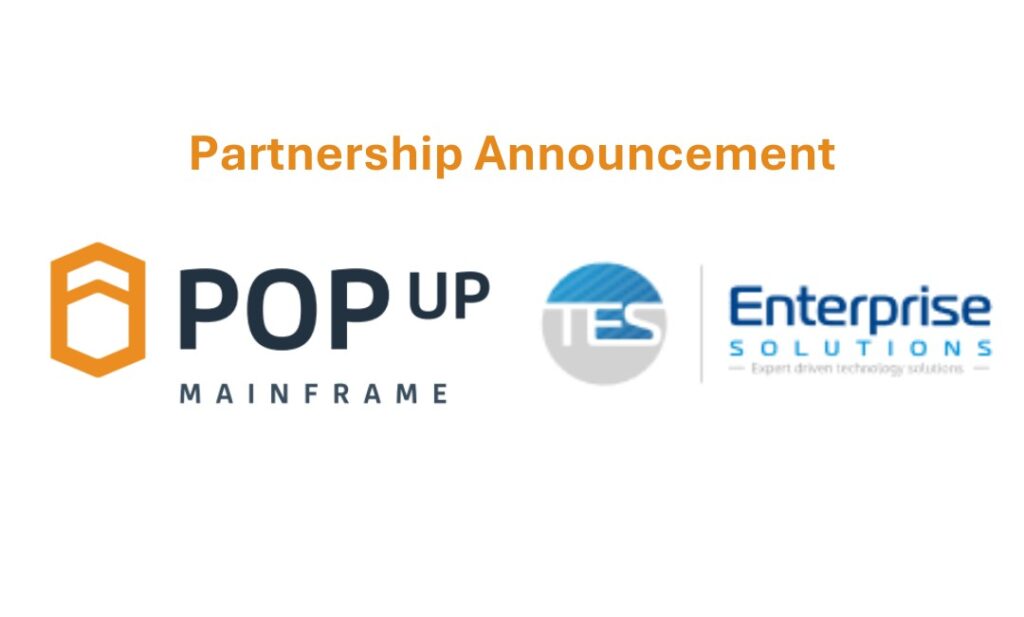The PopUp Mainframe team was recently in the mighty Midwest, taking part in both the illustrious SHARE conference, and the TechFieldDay Extra event, in Cleveland, Ohio. In this blog we summarise CEO Gary Thornhill’s presentation.
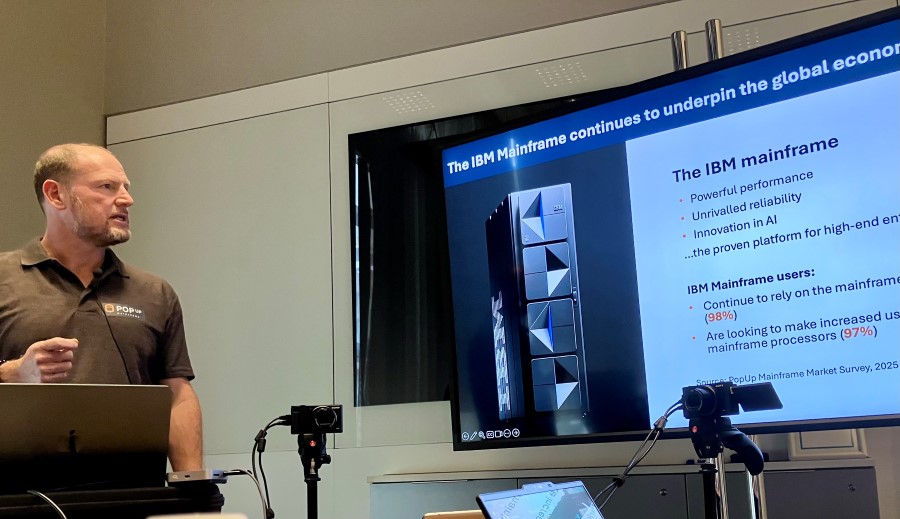
Introduction
As data from our 2025 mainframe market survey shows, mainframe delivery cycles are often hampered by bottlenecks in operational processes. Using PopUp Mainframe, these bottlenecks can be beaten, enabling mainframe teams to revolutionise mainframe delivery.
Our conference presentationsoutlined our uniquely rapid and flexible approach to supporting faster mainframe delivery. To do this, we introduced some of the latest capabilities of the PopUp Mainframe solution:
- Full support of a modern mainframe CI/CD pipeline, using – in this case – IBM and open-source DevOps tools
- The choice of Linux on Z or the cloud for deployment
- The ability to invoke and shut down virtual mainframes in minutes
- The facility to save, reset, and shareinstances of the PopUp Mainframe environment using the new ‘FastTrack’ capability
- Integration with 3rd party data masking products for data compliance
- The inclusion of Ansible playbooks for streamlined administration
Our Demo Scenario
In our presentation, we used a demo scenario, featuring a simple mainframe application, “NextGen Bank”, with a web-based UI, z/OS Connect to call the backend, atypical mix of COBOL, CICS, and Db2. The backend would ordinarily be a production LPAR on a physical mainframe – in our demo we ran it in a PopUp Mainframe environment, as a test version.
Invoking PopUp Mainframe X and Z Editions
There are two editions of the product – X Edition, for x86 hardware and the cloud, and the Z Edition, running on Linux on Z. Both provide a virtual, on-demand z/OS environment on-demand, only the underlying hardware changes.
You can invoke either in a few minutes.
Once the PopUp Mainframe product (or “PopUp”) is available, you can populate it with our choice of applications and data – our own unique dev/test environment, including compliant/masked data – to perform our task. This was totally configurable each time, of course.
Another key capability of a PopUp is to allow users to take a snapshot of the z/OS environment and, at any time, return to any of the snapshots. This meansyou can reset to a previous state anytime, perfect for testing out new features or upgrades. So, before we made a code change requested by the customer, we took a snapshot of this PopUp to save a ‘before’ state.
Implementing an Application Change under PopUp Mainframe
Thesample Next Gen Bank application was originally showing the customer transaction history in ascending date order, oldest first. For our demo, we have received a new change request, from the business, asking to see the most recent transaction at the top, which means the transaction history needed to be sorted in descending order.
In our example, the development process is a relatively straightforward CI/CD pipeline, featuring a standard IDE to do the development, then specific build and unit test steps, before deploying the code and running system tests. Of course, the stages, and the choice of tools, crucially, is completely flexible: PopUp supports all approaches.
Starting with the code change, in this scenario the developer checked out the code from the GitHub repository using VS Code, modified the query to retrieve the rows in descending order, and committed and pushed the code back to the GitHub repository. The CI/CD pipeline was automatically triggered by the code check-in. This pipeline used GitHub Actions, which, in this example, built the code using the IBM DBB facility, then conducted unit tests using the open-source tool COBOL-CHECK, and pushed the compiled binaries into an artefact repository, Artifactory. These binaries were then deployed onto a different z/OS instance using IBM’s deployment facility, Wazideploy, where integration tests were performed using the Galasa open-source testing framework.

Mainframe application processes are not always simple or successful.So, in our example, the testing reports an error. The application showed that the balances were now blank. As it turned out, the developer had forgotten another relevant change.
In situations like this, it is useful torevert to a previous working state and restart.
The PopUp Mainframe FastTrack capability reset our environment to the snapshot taken before we started the code change. With the environment quickly restored, the developer could isolate and fix the logic error.
With the code fixed (using the IDZ product this time – PopUp Mainframe supports your choice of IDE),the pipeline was this time successful.
Our simple example illustrates an environment that is productive, flexible, and scalable.
Operational Efficiency
A further new capability was the inclusion of pre-installed Ansible playbooks to assist with the administration of the PopUp environment. We showed one such playbook example to support adding and removing users within one PopUp instance without the reliance on, say, a RACF administrator.
Another important facet of a PopUp is that it can be shut down immediately –meaning no environments left running idle, and no wasted resources. As customers have told us, this is perfect for helping meetIT sustainability objectives.
Summary
Our presentations underscored our vision to revolutionize mainframe delivery by dramaticallyaccelerating the mainframe delivery process.
As we demonstrated, from a developer making a code change, committing to GitHub, then sequencing build, unit testing, deployment, and integration testing using a variety of 3rd party and open-source tools, resetting to a previous state, this all happens in the instantly available, flexible PopUp Mainframe environment.
Customers have reported up to a 400% increase in mainframe deliveries made, a reduction in the average time taken to deliver, significant sustainability metric gains by being able to switch off unused resources, and greater flexibility and responsiveness.
Thanks
Our thanks go to the fantastic Tech Field Day team and the panel of experts for their time and insights, and to the wider SHARE organization for their support.
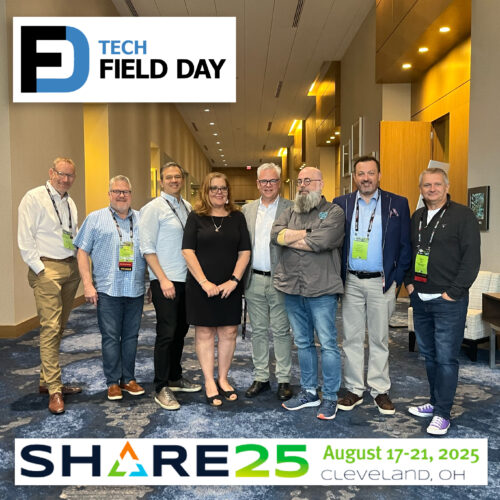
Further Information
Watch the recording of our session via the Tech Field Day SHARE 2025 page
